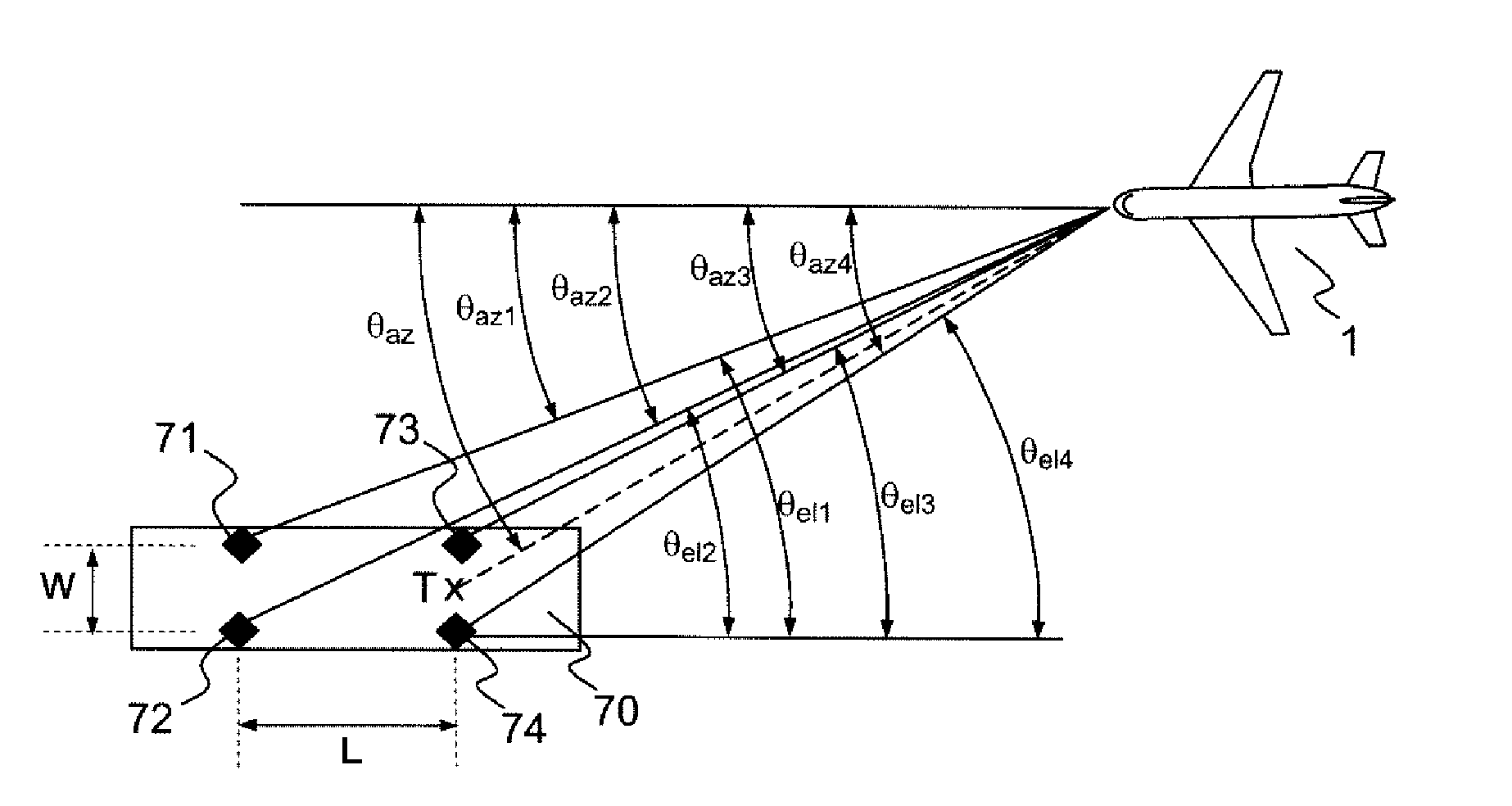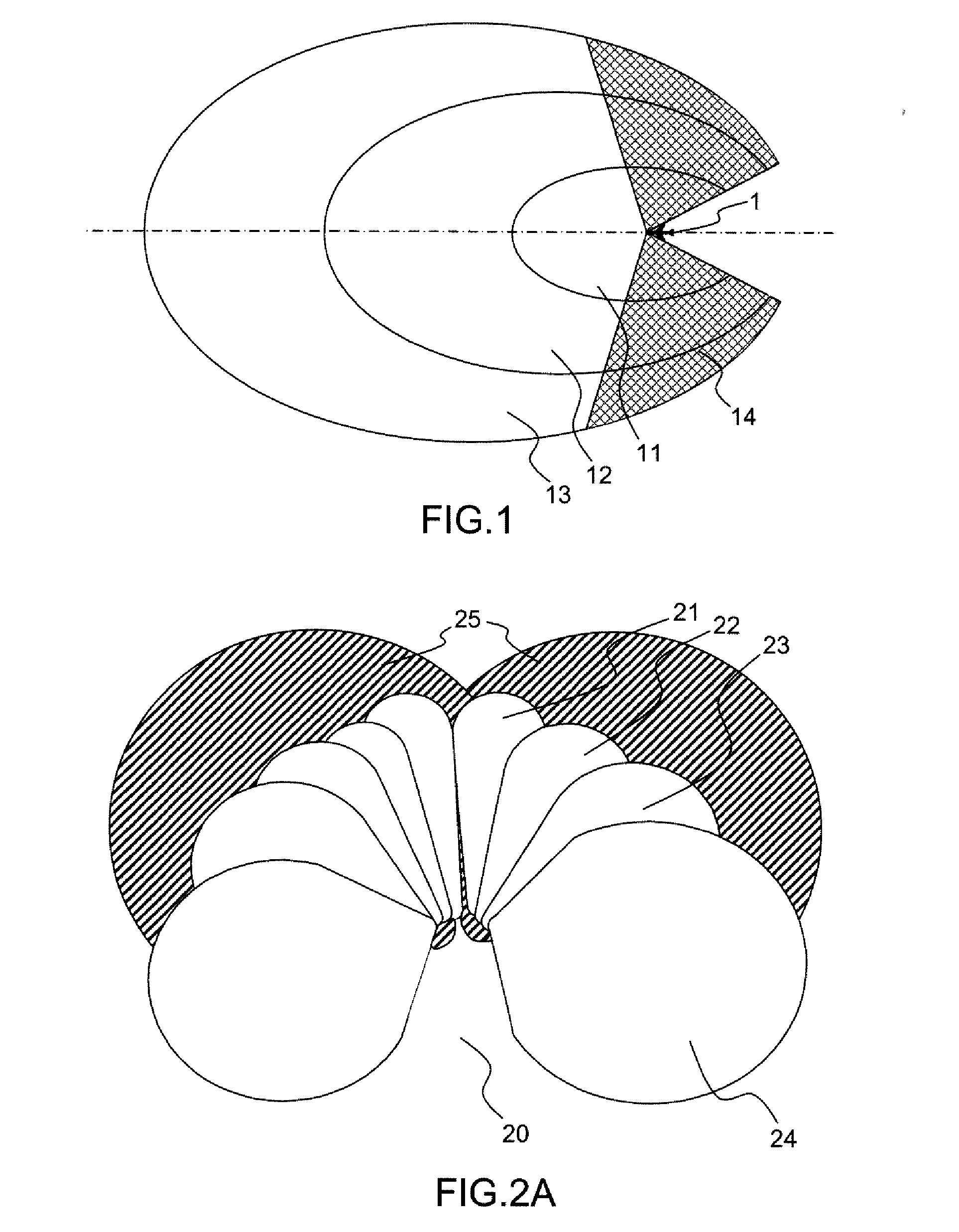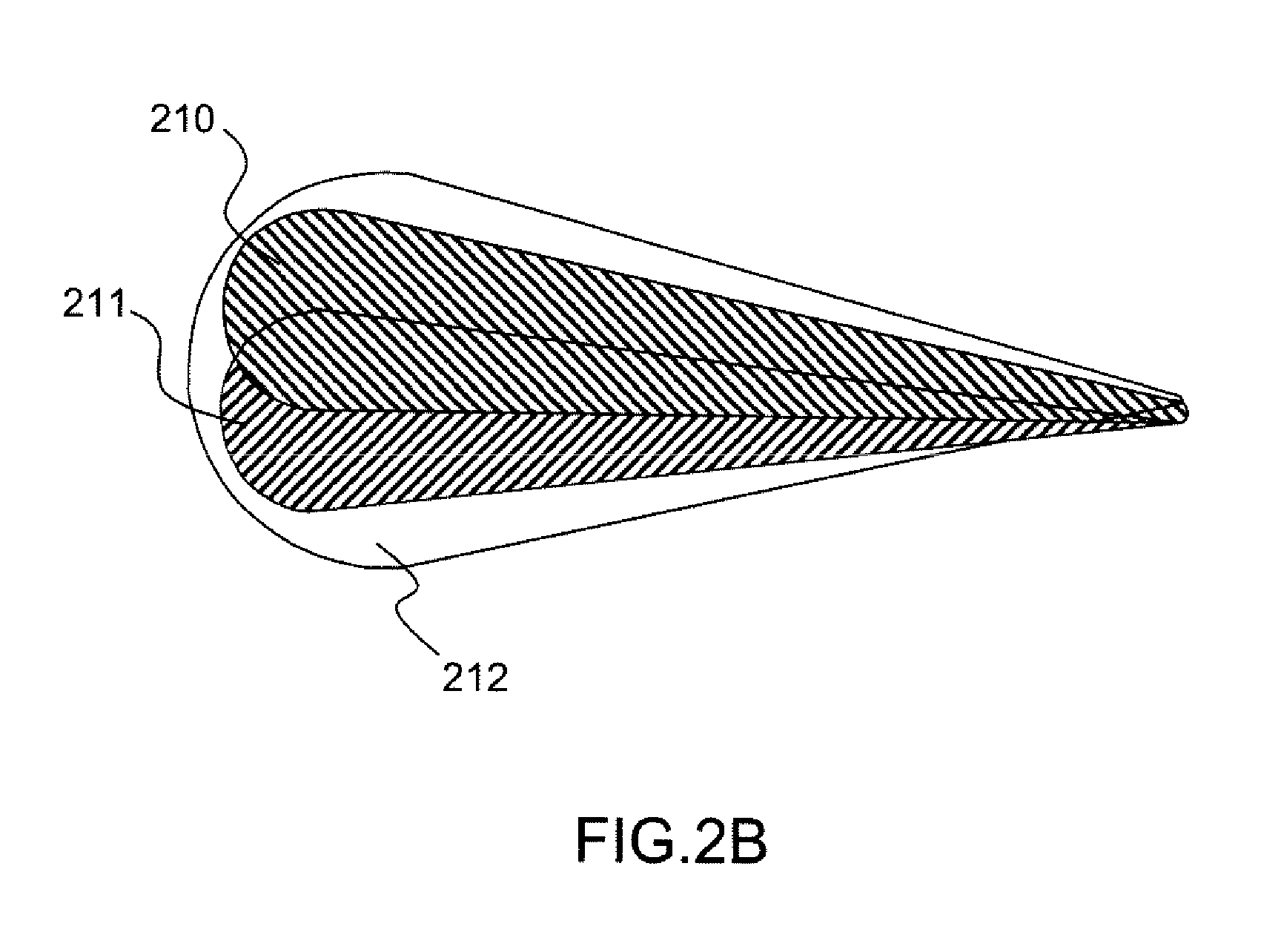A sense-and-avoid
system may present a risk with respect to the safety of personnel and must consequently meet stringent requirements in terms of reliability and effectiveness.
Furthermore, such systems have the drawback of requiring an excrescence on the structure of the
drone, accommodating the motorized or electronic scanning antenna structure.
This drawback entails aerodynamic and / or size constraints.
Since the antenna structure is centred thereat, an
impact on the
nose of the aircraft may then entail a complete loss of the sense-and-avoid function.
The redundancy of such a
system is also tricky, if not impossible, to realize in practice.
Another drawback of the known systems of the prior art lies in the fact that they do not allow a plurality of functions to be carried out on the basis of the same physical architecture.
Now, the Ka-band for example does not enable weather conditions to be detected, narrow-beam or scanning radars not being able to carry out more than one function simultaneously.
Thus, a scanning radar does not allow for a
weather radar, itself operating in scanning mode, to be reliably detected since the probability of intercepting the signals is low.
Another drawback of the known systems of the prior art also lies in the fact that antenna scanning entails a relatively low probability of detecting obstacles.
Moreover, the known systems of the prior art cannot hierarchize the danger level of the detected targets.
In these systems, the target tracking can be carried out only in sampled mode, with the consequence of there being a risk of
confusion, mainly in the presence of ground
clutter, or else of
ground vehicles.
These systems focus onto particular targets, by switching from a standby mode to a tracking mode, but such switching nevertheless impairs the detection of potentially hazardous new targets.
Thus, multi-target tracking is limited by the mechanical constraints on the antenna.
Such tracking may be implemented at very high scanning rates, for example with scanning times of less than two seconds, but this means a short integration time on the target and requires the use of
high transmission power levels.
Consequently, in the systems known from the prior art, since the refresh times are long and the integration time on the target is short, it is not possible for the receive channel to alleviate the deficiencies associated with scanning.
The transmission power levels necessary for accomplishing the sense-and-avoid function are therefore high, with the following drawbacks:high
power consumption;the necessity of operating the radar in
pulsed mode;the necessity of using higher operating frequencies, for the purpose of allowing satisfactory spatial segregation, to the detriment of efficiency;the difficulty of ensuring effective heat dissipation, since the
transmitter is centralized;the necessity of typically dedicating the
nose of the aircraft to implementing the sense-and-avoid function;the difficulty of providing satisfactory
immunity to
electromagnetic radiation, because of the
high transmission power;the difficulty of making a
system based on moving components of major criticality reliable;antenna scanning has the consequence that targets are tracked discontinuously, these being sampled at the scanning rate.
It is also necessary to associate, with each scan, the detected echoes with the corresponding tracks, even during turns by the carrier, except if the inertial
guidance system of the latter is integrated into the
tracking system, the inertial
guidance system then being critical for the sense-and-avoid function;the limitations inherent in multi-target tracking, notably the limitation on the number of tracks followed, and the necessity of operating specific antenna pointing means; andthe necessity for a long illumination time for targets having a low
radar cross section or RCS, making it difficult to achieve a good compromise between the data
refresh rate and the quality of the tracking.
Known systems of the prior art for providing a sense-and-avoid function may also be based on cooperative
modes; however such systems have the following drawbacks:small private planes, powered ultra-lights,
delta wings and
balloon probes are not equipped with cooperative means; andin dense traffic zones, the existing standards relating to cooperative
modes impose avoidance procedures on aircraft by a change of altitude, yet aircraft of the
drone type may be incapable of sudden changes of altitude, because of a lack of
engine power and because their aerodynamic
finesse does not allow them to ascend or descend rapidly.
 Login to View More
Login to View More  Login to View More
Login to View More 


